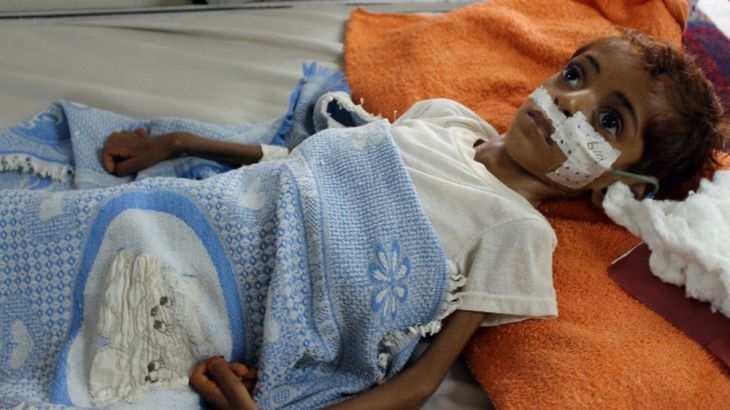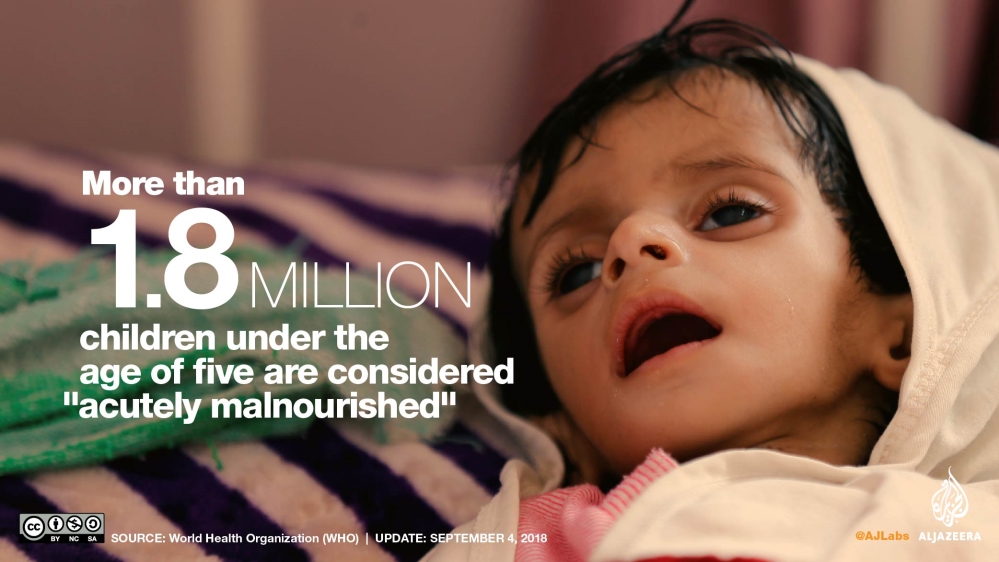
Hunger as a weapon ‘on the rise’ in warzones
One child a minute could die of malnutrition without treatment in world’s 10 worst conflict areas, Save the Children reports.
One child could die every minute from extreme hunger in conflict zones this year, according to Save the Children, as it reported a rise in the use of starvation as a weapon of war around the world.
The UK-based charity said in a report published on Monday that 4.5 million children under the age of five in the world’s 10 worst war-torn countries – including Yemen, Syria, Afghanistan and the Democratic Republic of Congo (DRC) – will need treatment for malnutrition.
Keep reading
list of 4 itemsCass Review: Feminists accused of being ‘unkind’ have been vindicated
Ten years after Chibok girls kidnapping: One woman’s struggle to move on
Children slide down destroyed Gaza mosque
That is an increase of nearly 20 percent over the last two years.
Save the Children said in 2018, about 590,000 of these severely malnourished children – 1,600 a day on average – are likely to miss out on much-needed treatment and die of starvation and disease.
“Time after time we are seeing starvation used as a weapon of war when deliveries of food are obstructed by the warring parties in places like Yemen, Syria and South Sudan,” said Helle Thorning-Schmidt, CEO of Save the Children.
“We must stop this dangerous trend,” she added, urging all warring sides to allow humanitarian access under the obligations of international law.
Among those at risk of death, 327,000 children are in the DRC, 105,000 in Sudan, 72,000 in Afghanistan and 36,000 in Yemen, among other countries in conflict.
‘Effective tool’
Civilians, especially women and children, have been bearing the brunt of Syria’s devastating civil war, now in its eight year.
Some 2,372 children are expected to die this year from extreme hunger, according to the report, as warring parties block food and medicine leading to a humanitarian crisis.
|
|
Fears are growing over a seemingly imminent all-out government offensive against the densely populated northwestern Idlib province, the last rebel bastion in Syria.
Al Jazeera’s Stefanie Dekker, reporting from Reyhanli, in neighbouring Turkey, said both sides are “complicit in using starvation as a “very effective tool to try and achieve their military and political aims”.
“What they have done over the course of this war is that they would besiege certain areas, like Idlib, part of Yarmouk camp in the capital, Damascus, and Eastern Ghouta close to Damascus, and then either bombard or starve them into submission,” she said.
“The government and rebel forces would also sometimes remove food, medical items and baby formula from the aid trucks, which led to a so-called surrender and a pattern of reconciliation deals.”
Humanitarian crisis
For three years, Yemen, the Arab world’s poorest country, has been wracked by a bloody war between the Houthi rebels and a Saud-UAE coalition backing Yemen’s internationally recognised government.
At the least 10,000 people have been killed and millions displaced, the United Nations has estimated.
Yemen, which stands on the brink of famine, is the world’s worst humanitarian crisis with more 22.2 million people in need of assistance, according to the UN.

In July, Save the Children warned that thousands could be affected by a new wave of deadly cholera, which infected more than one million people in the country last year.
A government-backed offensive to retake the strategic Hodeidah port – the main gateway for imports of relief supplies and commercial goods – from rebel fighters has trapped some 400,000 people in the city, according to aid groups.
Al Jazeera’s Andrew Simmons, reporting from neighbouring Djibouti, said the escalating offensive is a “crisis in the making”.
“So much aid comes in through this port,” he said. “If the city itself gets obliterated then the bridge between the port and the capital, Sanaa, will be cut, depriving civilians of food and aid supplies, particularly medicine for the injured.”